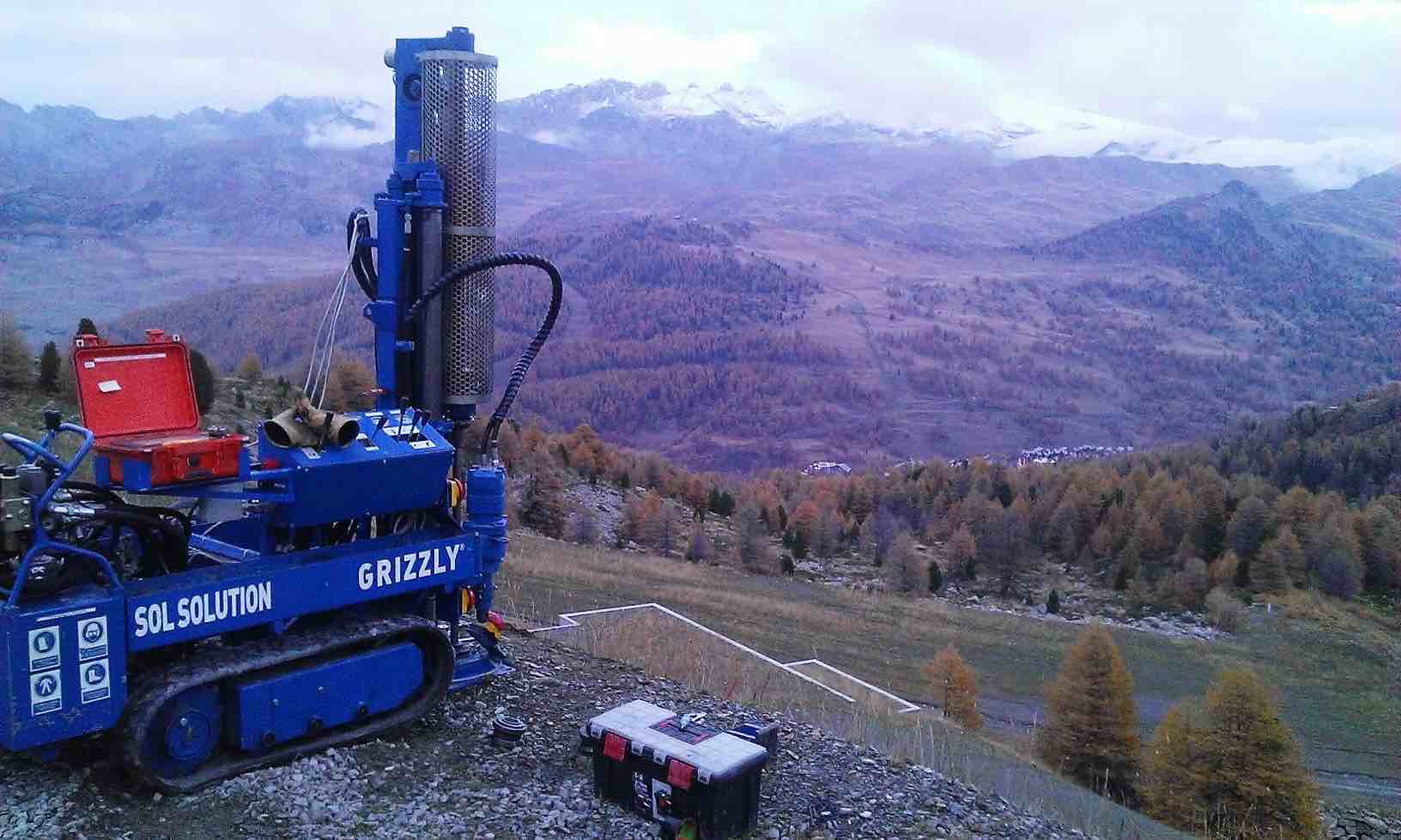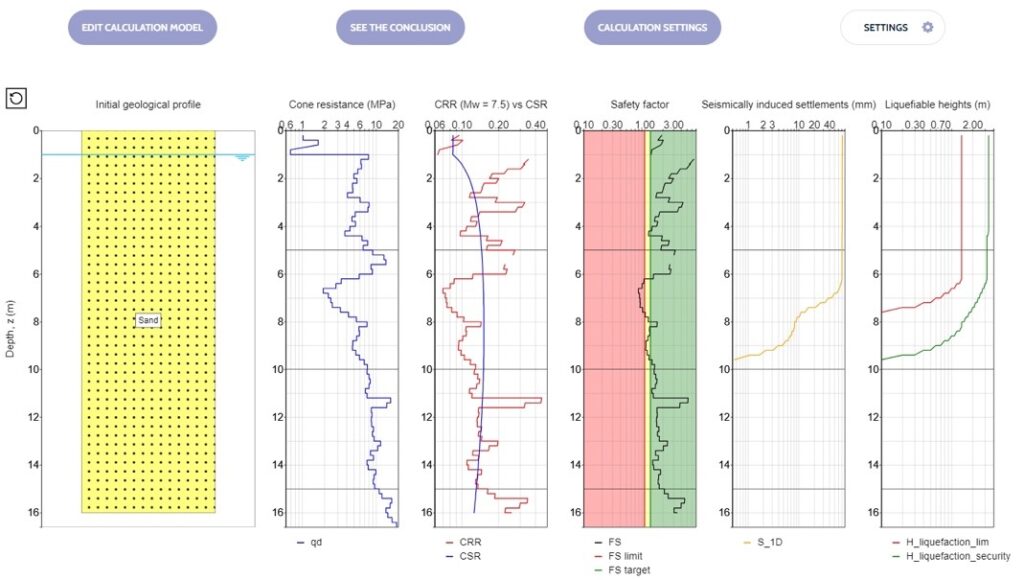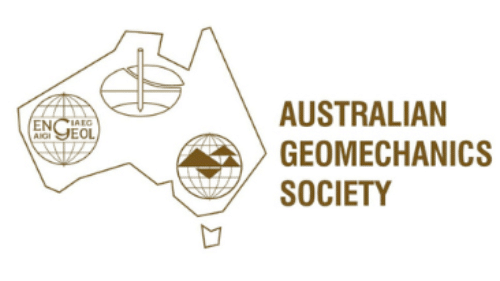A world first – Heavy Penetrometer automatically adapts to the soil hardness
The GRIZZLY is the first Dynamic Probing Super Heavy (DPSH) in the world to automatically adapt its impact energy to the hardness of the soils. This enables it to measure the dynamic resistance of the soils even more accurately.
Heavy dynamic penetrometers are the most suited for work on hard or very hard geological layers, where the soil resistance is over 50 MPa. However, for soft or very soft soils, the advantages of this type of equipment become its disadvantages: a single impact can sink the cone tip in by 10, 20, 30 centimetres or more.
In this case, the measurement made loses a lot of its finesse: for a depth of 1 metre, 30 measurement points are better than 3 to make an evaluation. However these soft zones are of great interest to geotechnical engineers.
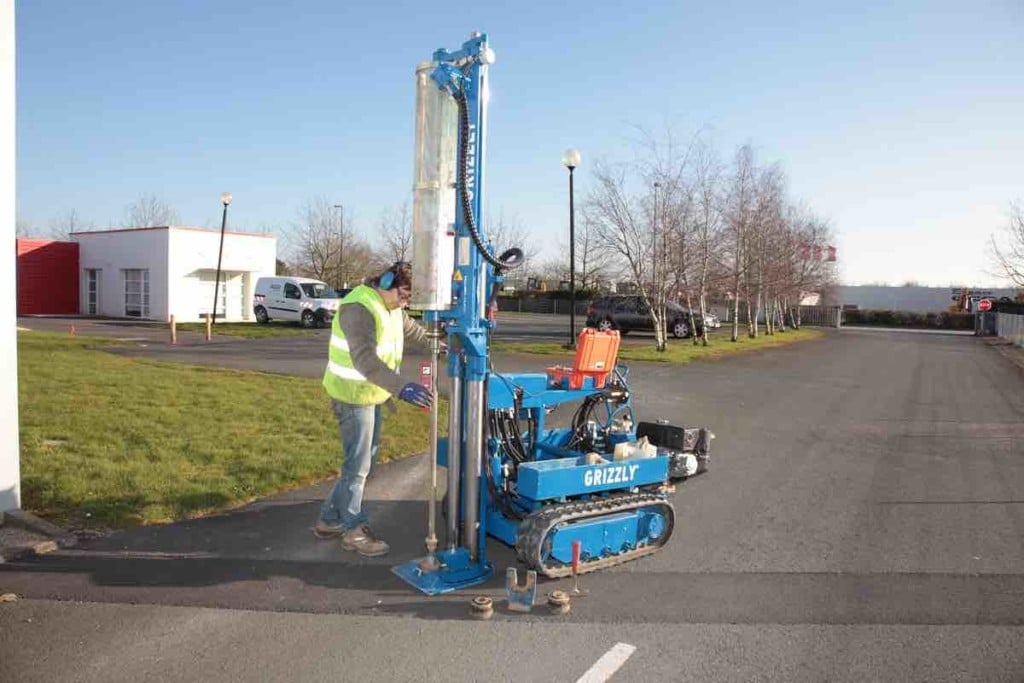
The technical solution developed by the R&D team of Sol Solution (Variable Energy GRIZZLY) still uses a fixed impact mass (M), but automatically varies H between four different values. This is all automatically commanded by the GRIZZLY integrated data acquisition system. Depending on the depth of penetration on the previous impact, using previously defined parameters, the onboard computer instantly decides on the value of H for the following test, so as to adapt in real time to the resistance of the soil encountered. During an evaluation, the more variations in resistance that are found in the soil, the more often the value of H changes. This requires no intervention by the operator or any interruption in the testing.
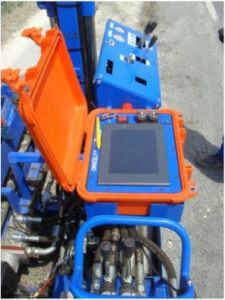
This innovative technology is already installed on Sol Solution light dynamic cone penetrometers (PANDA®), and is now being adapted to the GRIZZLY® where its advantages can be seen when combined with the dynamic measurements at each impact to obtain other important rheological properties of the soil – load penetration graph, deformation modulus, wave velocity, viscosity… – and to measure the energy transmitted in the impacts.
After scouring the market, we settled on the PANDA DCP test equipment as it offered the technical capability and, moreover, the flexibility required to work in the restricted environment our project presented; overhead clearance typically at 1500mm but as low as 1200mm. We had a unique problem that required a unique solution and that’s precisely what we found through the team at Insitutek and the PANDA equipment. The ease of assembly, intuitive operability and compact nature of the equipment, made light of the numerous soundings we required across a widely dispersed area.
Insitutek is our partner overseas for our test equipment. Ask them for a presentation or training for our products. I am sure you will be satisfied. They are a reliable and very kindly partner.
We have been very happy with the support from Insitutek. They are knowledgeable and have been super responsive and flexible to our needs.
Insitutek Blogs
We find clients are often looking for ways to improve geotechnical testing outcomes and do it more efficiently at the same time. This drives their buying decision making. Australian Soil and Concrete Testing (ASCT) was a case in point when they were searching for Plate Load Test equipment for their upcoming Collector Wind Farm project. Some of the things that motivated them include: […]
We are excited to introduce the addition of a new Liquefaction Risk Estimation module in WebSprint©. Paired with our cutting-edge products, PANDA® and GRIZZLY®, this module enables you to assess the liquefaction risk of soils exposed to seismic stress. PANDA® Instrumented DCP: This cutting-edge tool provides dynamic penetrometer soundings, delivering precise data crucial for seismic risk evaluations. GRIZZLY® […]
The Australian Geomechanics Society is gearing up for a series of geotechnical events across VIC, WA, NSW, and SA-NT. We are thrilled to inform you that we will be sponsoring and attending these exciting geotechnical events, and we would love for you to join us. It’s a fantastic opportunity to catch up, explore our booth (VIC), and stay informed about […]

